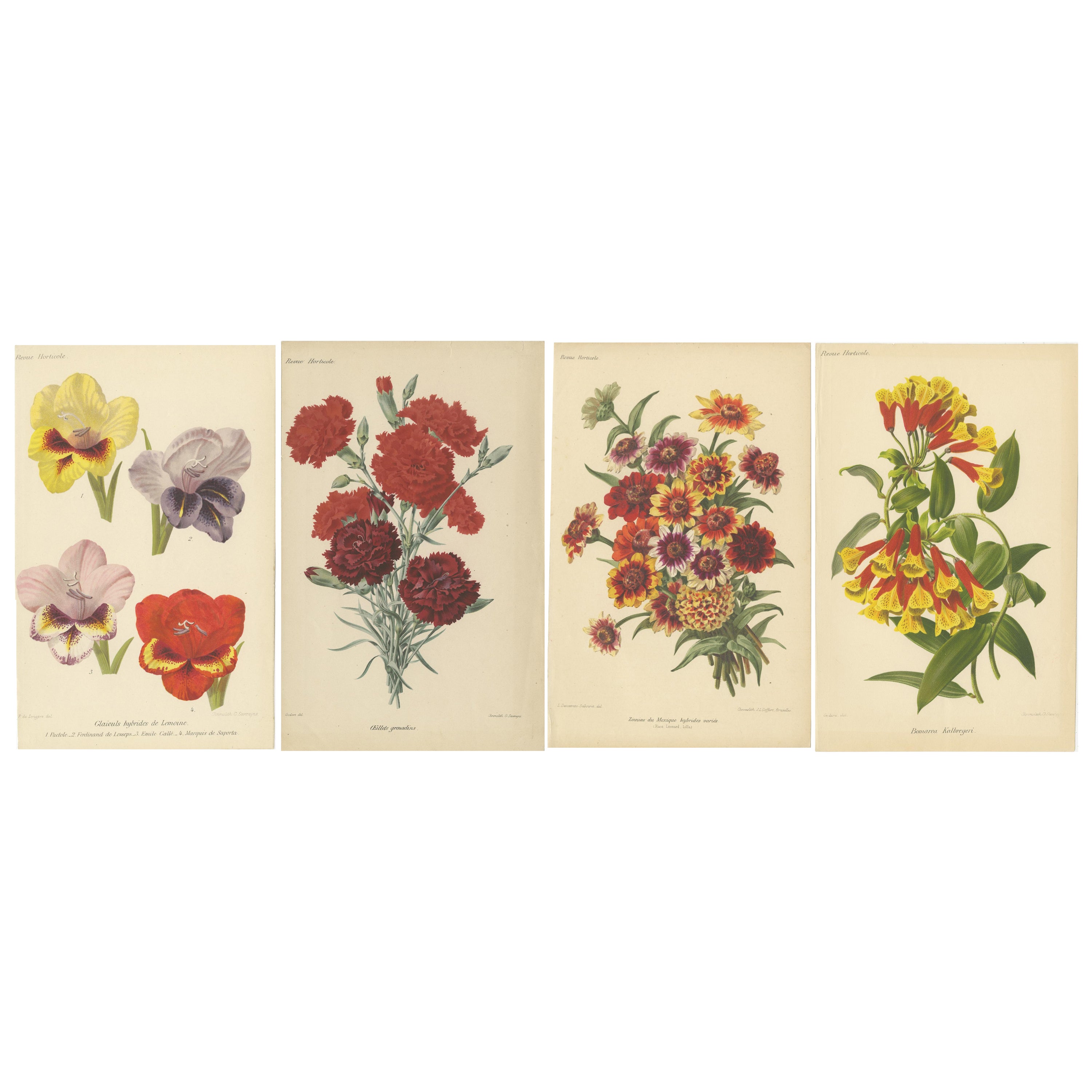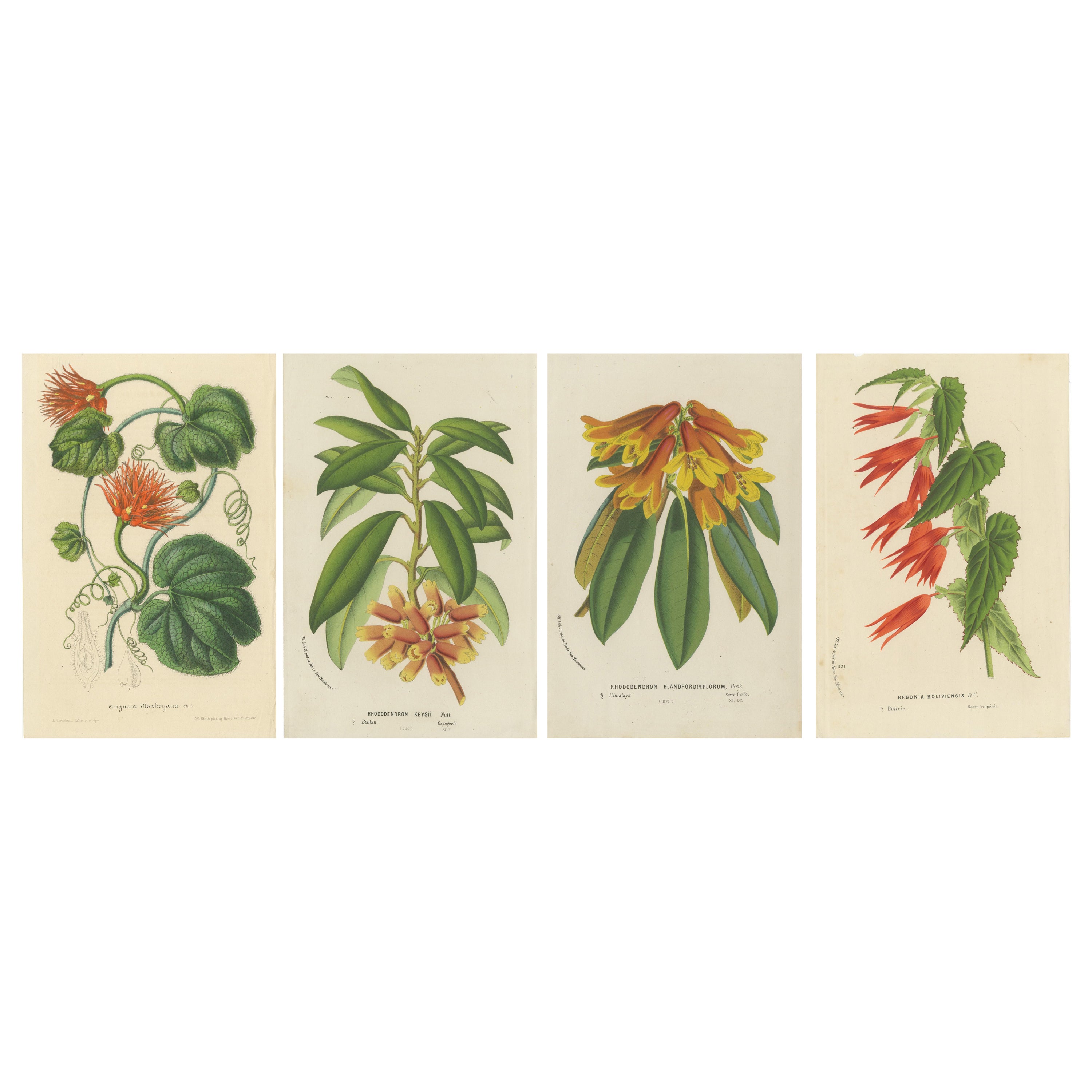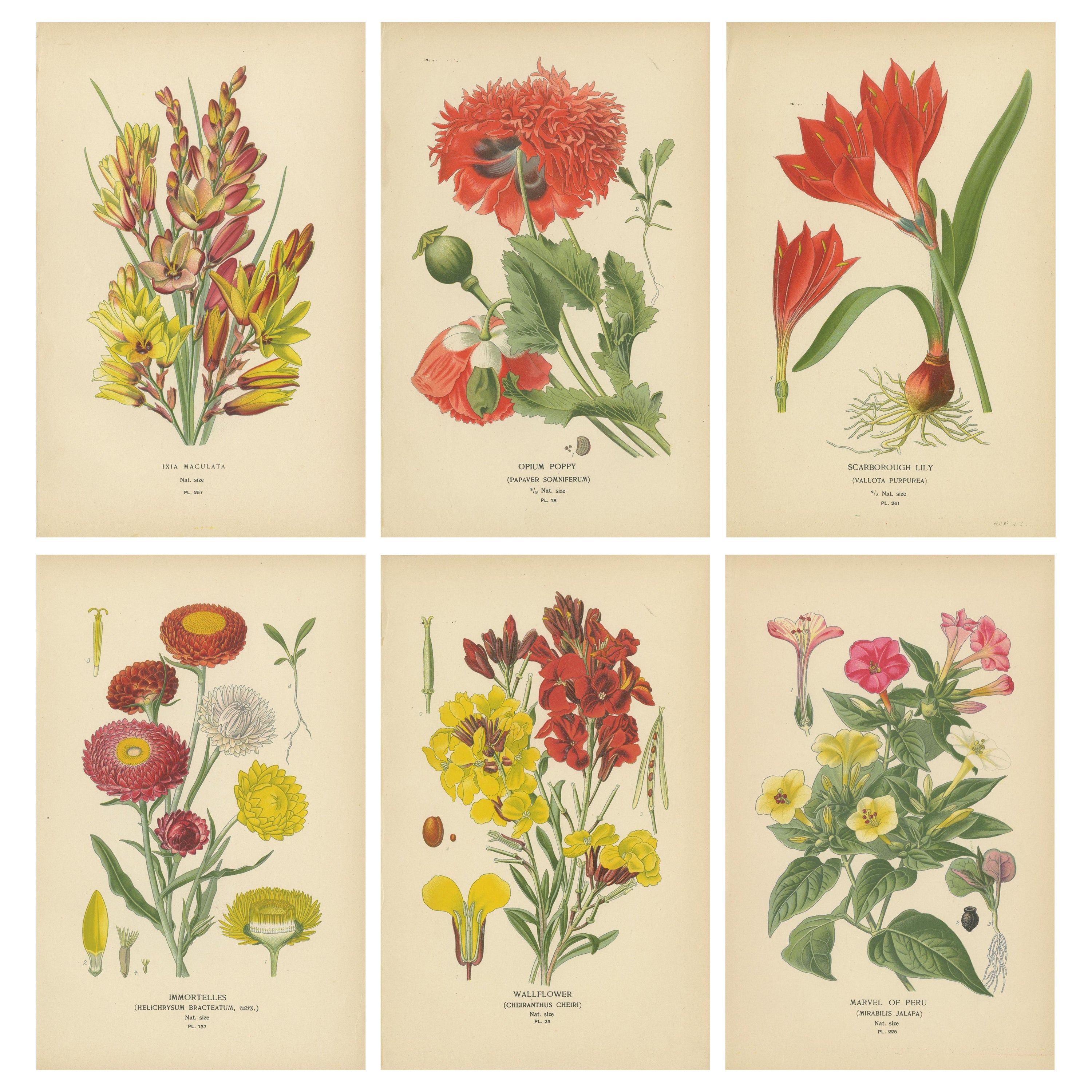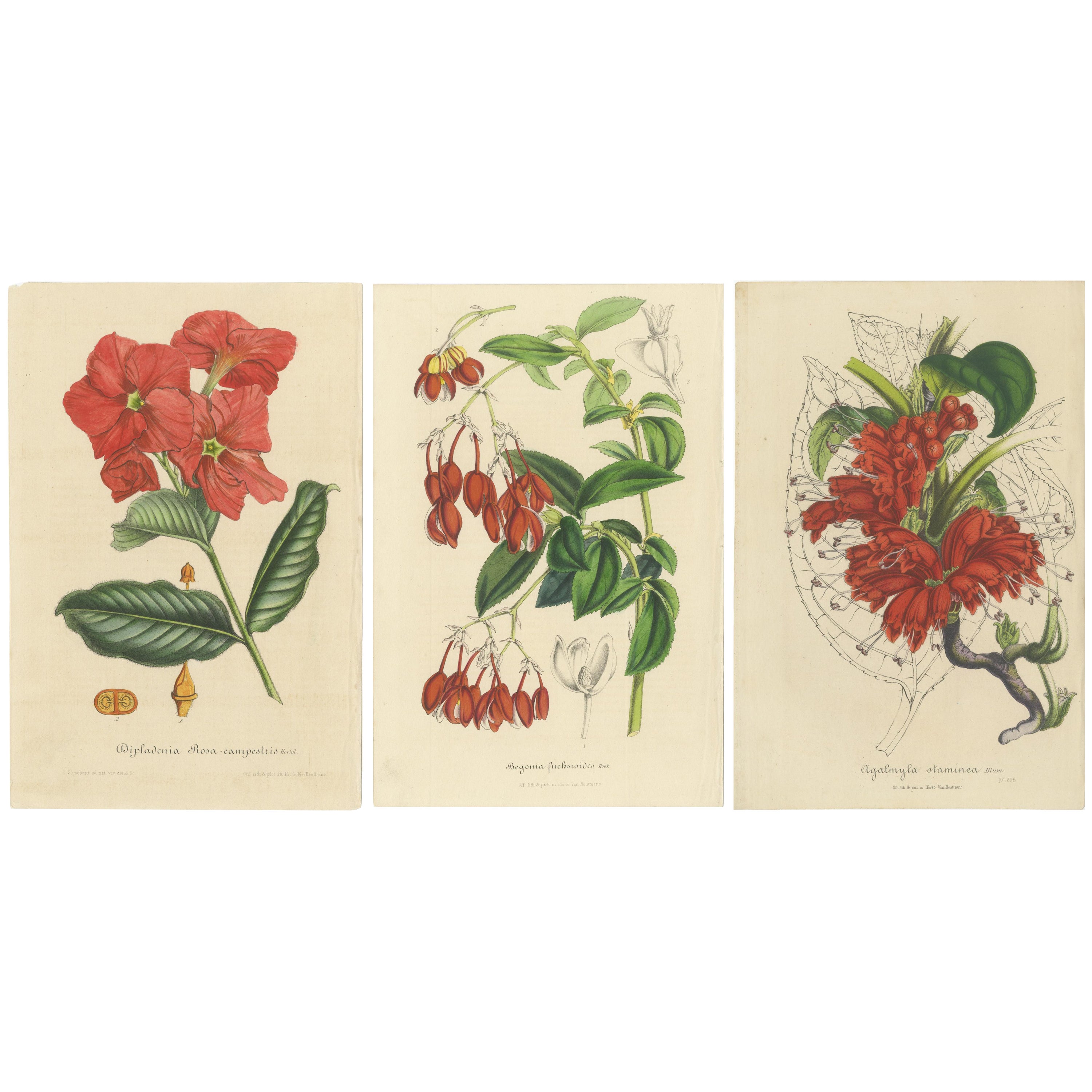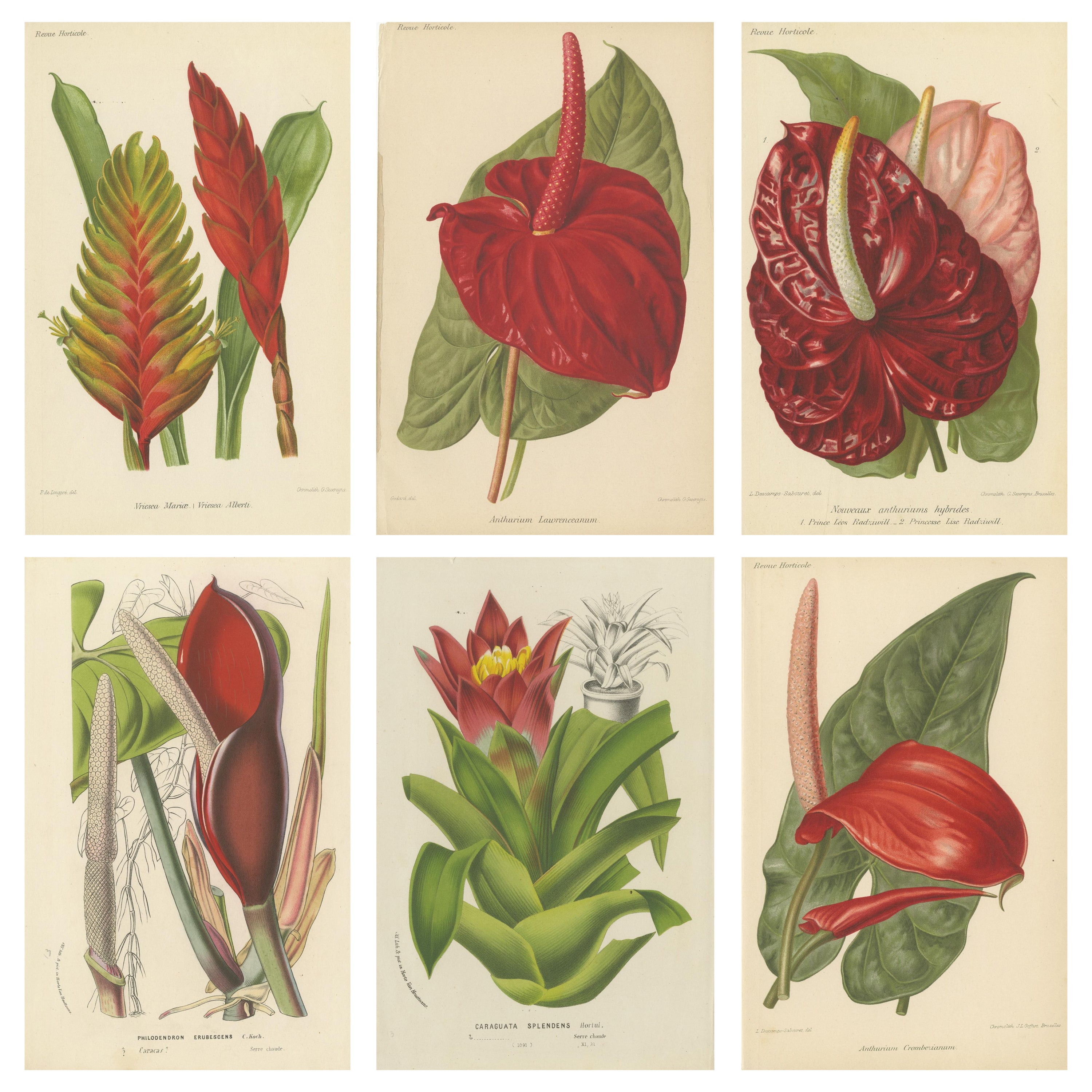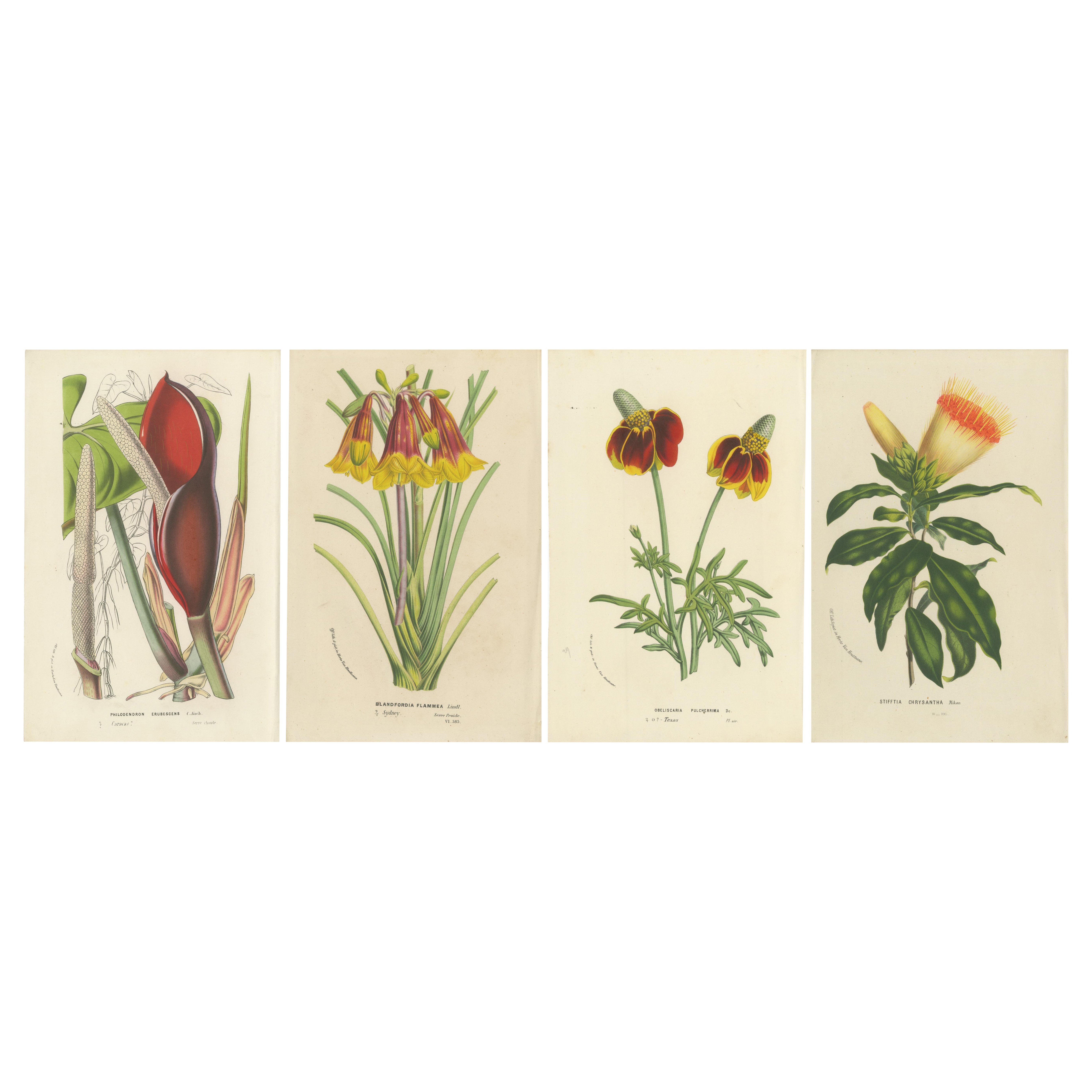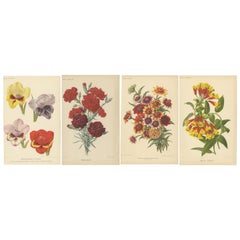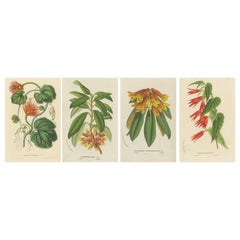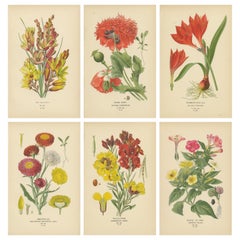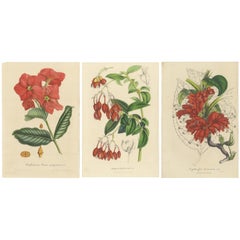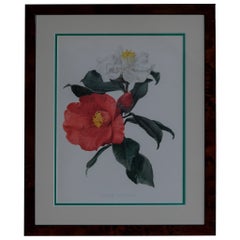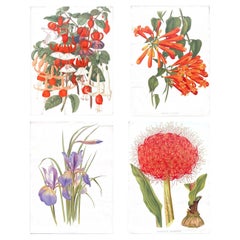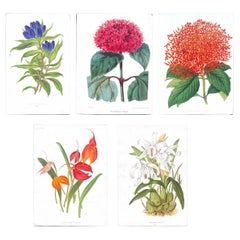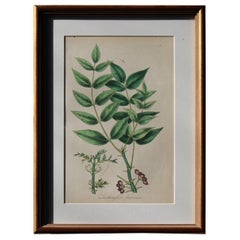Items Similar to Vibrant Botanical Chromolithographs: A Showcase of Exotic Blooms, 1875
Want more images or videos?
Request additional images or videos from the seller
1 of 6
Vibrant Botanical Chromolithographs: A Showcase of Exotic Blooms, 1875
$315.64per set
$394.55per set20% Off
£233.67per set
£292.09per set20% Off
€264per set
€330per set20% Off
CA$436.77per set
CA$545.96per set20% Off
A$481.53per set
A$601.91per set20% Off
CHF 251.92per set
CHF 314.90per set20% Off
MX$5,907.47per set
MX$7,384.34per set20% Off
NOK 3,171.18per set
NOK 3,963.98per set20% Off
SEK 2,965.56per set
SEK 3,706.95per set20% Off
DKK 2,010.99per set
DKK 2,513.74per set20% Off
About the Item
The following botanical prints are from a collection illustrated by Louis Benoît Van Houtte.
Louis Benoît Van Houtte was a prominent Belgian horticulturist and nurseryman. He published the famous "Flore des Serres et des Jardins de l'Europe" (Flora of Greenhouses and Gardens of Europe) during the mid-19th century. This was a large-scale botanical work published between 1845 and 1883, featuring hundreds of lithographs, many of which were hand-colored using the chromolithography technique.
About Louis Van Houtte:
Van Houtte was a leading figure in European horticulture and operated one of the most extensive commercial plant nurseries in Europe at the time. His nursery was based in Ghent, Belgium, where he introduced numerous exotic plants to European gardens. In addition to his horticultural pursuits, Van Houtte’s *"Flore des Serres"* was one of the most important botanical publications of the 19th century. It not only documented plants from his own greenhouses but also featured species from around the world, including new discoveries from plant expeditions.
Chromolithography Technique:
Van Houtte employed some of the most talented botanical illustrators and lithographers of his day to create stunningly detailed and vibrant illustrations for *"Flore des Serres"*. These prints are among the finest examples of chromolithography—a method of making multi-colored prints that were able to capture the vivid beauty of plants with lifelike precision. The technique was highly labor-intensive, but the results were visually striking, showing intricate details of each flower and plant in full color.
Conclusion: So, while the individual prints may not have been exclusively made by Van Houtte himself, many chromolithographs of this kind were associated with or inspired by his publication legacy, making him a significant figure in the world of botanical illustration.
More about the plants:
1. **Comparetia rosea Lindl.** (*Rose-colored Comparetia*)
- This delicate orchid is depicted with cascading rose-pink flowers hanging gracefully from a wooden log, a classic presentation for epiphytic orchids. The vibrant red hue of the flowers is meticulously rendered, showcasing the lithographic precision typical of Van Houtte's prints. The structural details of the leaves and wood texture provide a naturalistic setting.
2. **Silene speciosa** (*Showy Catchfly*)
- This lithograph captures the star-shaped flowers of the *Silene speciosa*, with their striking red and yellow hues. The bold color contrasts emphasize the beauty of this flowering plant, with the stem and leaves offering a graceful balance to the vibrant blossoms. The illustration provides both botanical details and an aesthetic arrangement that was common in Van Houtte’s work.
3. **Tropaeolum Majus atrosanguineum** (*Blood Nasturtium*)
- The vibrant red flowers of the *Tropaeolum majus*, known for their trailing vines and rounded leaves, are elegantly illustrated here. The intense red of the petals and the verdant green of the leaves create a strong visual contrast, characteristic of Van Houtte's attention to color and detail. This particular species is popular for its ornamental value and edible flowers.
About the Makers:
The illustrations were produced under the supervision of Louis van Houtte, whose nursery in Ghent, Belgium, was a major center for both plant cultivation and botanical publication in the mid-19th century. Van Houtte's publications, particularly his renowned *Flore des Serres et des Jardins de l'Europe* (Flora of the Greenhouses and Gardens of Europe), featured hand-colored lithographs of plants, many of which were newly discovered species at the time.
The technique used was chromolithography, where multiple layers of colors were applied in succession to create the rich, vivid tones seen in these prints. Van Houtte’s collaboration with skilled lithographers ensured the quality of each illustration, making his works highly sought after by botanists, horticulturists, and art collectors alike.
- Dimensions:Height: 9.65 in (24.5 cm)Width: 6.3 in (16 cm)Depth: 0 in (0.02 mm)
- Sold As:Set of 3
- Materials and Techniques:
- Period:
- Date of Manufacture:Circa 1875
- Condition:Condition: Good, given age. General age-related toning and/or occasional minor defects from handling. Colors are vivid. Please study scan carefully.
- Seller Location:Langweer, NL
- Reference Number:Seller: BG-13761-51, BG-13761-105, etc1stDibs: LU3054341459222
About the Seller
5.0
Recognized Seller
These prestigious sellers are industry leaders and represent the highest echelon for item quality and design.
Platinum Seller
Premium sellers with a 4.7+ rating and 24-hour response times
Established in 2009
1stDibs seller since 2017
2,609 sales on 1stDibs
Typical response time: <1 hour
- ShippingRetrieving quote...Shipping from: Langweer, Netherlands
- Return Policy
Authenticity Guarantee
In the unlikely event there’s an issue with an item’s authenticity, contact us within 1 year for a full refund. DetailsMoney-Back Guarantee
If your item is not as described, is damaged in transit, or does not arrive, contact us within 7 days for a full refund. Details24-Hour Cancellation
You have a 24-hour grace period in which to reconsider your purchase, with no questions asked.Vetted Professional Sellers
Our world-class sellers must adhere to strict standards for service and quality, maintaining the integrity of our listings.Price-Match Guarantee
If you find that a seller listed the same item for a lower price elsewhere, we’ll match it.Trusted Global Delivery
Our best-in-class carrier network provides specialized shipping options worldwide, including custom delivery.More From This Seller
View AllVibrant Blooms: A Collection of Exquisite Chromolithographs from Revue Horticole
Located in Langweer, NL
These chromolithographs, originally published in the *Revue Horticole*, represent some of the finest examples of 19th-century botanical art, showcasing an exquisite level of detail a...
Category
Antique 1880s Prints
Materials
Paper
$344 Sale Price / set
20% Off
Lush and Vibrant: A Collection of Exotic Botanical Illustrations, circa 1875
Located in Langweer, NL
The prints depict a selection of exotic plants with a remarkable detail and vibrant color, showcasing the beauty and diversity of botanical life. Each illustration is a testament to ...
Category
Antique 1870s Prints
Materials
Paper
$392 Sale Price / set
20% Off
Floral Treasures: 19th-Century Chromolithographs from the Botanical Collection
Located in Langweer, NL
The following six chromolithographs are part of a collection published in 1896, created by Désiré Bois and Edward Step. They illustrate botanical subjects with remarkable attention t...
Category
Antique 1890s Prints
Materials
Paper
$516 Sale Price / set
20% Off
Exquisite Botanical Illustrations from Curtis’s Botanical Magazine (1847)
Located in Langweer, NL
These beautiful hand-colored botanical illustrations, drawn and lithographed by the renowned artist Walter Hood Fitch, were featured in Sir William Jackson Hooker's *"Curtis's Botanical Magazine,"* published in London in 1847. Fitch was one of the most prolific and skilled botanical illustrators of the 19th century, known for his ability to capture the intricate details and vibrant hues of the plants he depicted.
Sir William Jackson Hooker, a famous British botanist and the director of the Royal Botanic Gardens, Kew, commissioned these illustrations as part of his work to document newly discovered plants from around the world. The *Curtis’s Botanical Magazine* has been published since 1787 and remains one of the longest-running botanical periodicals.
Detailed Descriptions of Each Plant
#### 1. **Dipladenia Rosa-campestris** (*Hortul. ex Veitch*)
- **English Name**: Rose Dipladenia
- **Description**: This illustration showcases *Dipladenia rosa-campestris*, a striking flowering plant known for its showy pink to deep red trumpet-shaped flowers. Native to tropical regions of South America, particularly Brazil, *Dipladenia* belongs to the family Apocynaceae and is prized in horticulture for its vibrant blooms and ability to climb. Fitch's illustration emphasizes the waxy leaves and the vivid color of the petals, bringing the plant to life on the page.
#### 2. **Begonia fuchsioides** (*Hook.*)
- **English Name**: Fuchsia-flowered Begonia
- **Description**: The *Begonia fuchsioides* is depicted with its characteristic red, pendulous flowers, which closely resemble the blooms of fuchsia plants. This species of Begonia is native to tropical regions and is popular for its delicate, bell-shaped flowers and glossy leaves. Fitch’s attention to the arrangement of the leaves and the contrast between the flowers' vibrant red and the soft green leaves provides a lifelike representation of this exotic plant.
#### 3. **Agalmyla staminea** (*Blume*)
- **English Name**: Staminate Agalmyla
- **Description**: This illustration captures the unique red tubular flowers of *Agalmyla staminea*, a plant native to Southeast Asia. The species is part of the Gesneriaceae family and is known for its bright, showy flowers that grow in dense clusters. Fitch’s careful rendering of the plant’s leaves and the intricate veining, along with the vibrant red flowers, highlights his talent for bringing the botanical subject to life with both scientific accuracy and artistic flair.
### About the Makers
#### **Walter Hood Fitch** (Artist and Lithographer)
Walter Hood Fitch (1817–1892) was one of the most influential botanical artists of the 19th century, working primarily with Sir William Hooker and later his son, Joseph Dalton Hooker, at Kew Gardens. He produced thousands of illustrations for various botanical publications, including *Curtis’s Botanical Magazine*, where he was responsible for the majority of its plates from 1834 to 1877. Fitch’s mastery of lithography allowed him to create richly detailed and accurate depictions of plants, with a particular talent for illustrating both the botanical structure and the vibrant colors of flowers.
#### **Sir William Jackson Hooker** (Director and Editor)
Sir William Jackson Hooker (1785–1865) was a prominent British botanist and the director of the Royal Botanic Gardens, Kew. Under his leadership, Kew Gardens expanded its collection of plants from around the world, and Hooker was instrumental in promoting the scientific study and illustration of these species. As the editor of *Curtis’s Botanical Magazine*, Hooker collaborated with Fitch to document and share the beauty and diversity of plants with the scientific community and the public.
### The Lithographic Technique
Lithography, particularly chromolithography, was a crucial innovation in botanical illustration. Fitch was skilled in the traditional method of lithography, where an image was drawn onto a stone plate with a greasy substance and then inked for printing. Hand-coloring was often applied afterward to bring the prints to life, as seen in these illustrations. This method allowed for highly detailed, accurate representations of plants and their botanical features, making it invaluable for both scientific study and aesthetic appreciation.
### Conclusion
These prints from *Curtis’s Botanical Magazine* reflect the height of botanical art in the mid-19th century. The combination of Walter Fitch...
Category
Antique 1840s Prints
Materials
Paper
$411 Sale Price / set
20% Off
Exquisite Flora: A Chromolithographic Collection from the Revue Horticole, 1855
Located in Langweer, NL
These original antique prints are beautiful examples of botanical illustrations featuring tropical plants, drawn with precise detail and coloration. The Latin and English names of th...
Category
Antique 1850s Prints
Materials
Paper
$516 Sale Price / set
20% Off
Flora Illustrated: A Collection of 19th Century Botanical Art, Published c.1875
Located in Langweer, NL
The prints depict various botanical species, each illustrated with detailed attention to the morphology of the plants, including leaves, flowers, and sometimes fruits or seeds. These...
Category
Antique 1870s Prints
Materials
Paper
$325 Sale Price / set
20% Off
You May Also Like
Botanical Chromolithographs from: William Robinson's Flora & Sylva
Located in Kettering, GB
A collection of 16 original botanical chromolithograph print in colours from William Robinson’s 1903-1905 Flora & Sylva – A Monthly Review....
Category
Early 20th Century British Decorative Art
Materials
Paper
Original 1880s Botanical Print of Hæmanthus Kalbreyeri — Vibrant Antique Chromol
Located in Fukuoka, JP
A striking original chromolithograph from the 1880s, this botanical print features the dramatic Hæmanthus kalbreyeri, also known as the blood lily. Characterized by its intense red s...
Category
Antique 19th Century French Prints
Materials
Paper
Bignonia venusta – Antique Botanical Chromolithograph, 1880s
Located in Fukuoka, JP
A striking original botanical print from the 1880s, featuring Bignonia venusta, also known as flame vine or orange trumpet vine. This brilliantly colored illustration captures the dr...
Category
Antique 19th Century French Prints
Materials
Paper
1850 12 Hand Coloured Botanical Plates From the American Practice of Medicine
Located in Lowestoft, GB
A collection of 12 mid-19th century hand colured engravings of botanical specimens from the American Practice of Medicine, 1850
Each has been professionally mounted and framed in a ...
Category
Antique Mid-19th Century American Victorian Decorative Art
Materials
Paper
John Nugent Fitch Orchids, 19th Century Hand Colored Engraving Botanical Print
By John Nugent Fitch
Located in Miami, FL
This beautiful, original hand-colored orchid lithograph of "Begonia Scharffii" Orchids by John Nugent Fitch is plate number 7028 from Robert Warner's publication 'The Orchid Album, C...
Category
Antique Mid-19th Century British Victorian Prints
Materials
Wood, Paper
Set of Two Rare Botanical Engravings by D’Orbigny — 1849
Located in Fukuoka, JP
Set of Two Rare Botanical Engravings by D’Orbigny — Dictionnaire Universel d’Histoire Naturelle, Paris, 1849
An exquisite pair of original hand-colored botanical engravings from the...
Category
Antique 19th Century French Prints
Materials
Paper
